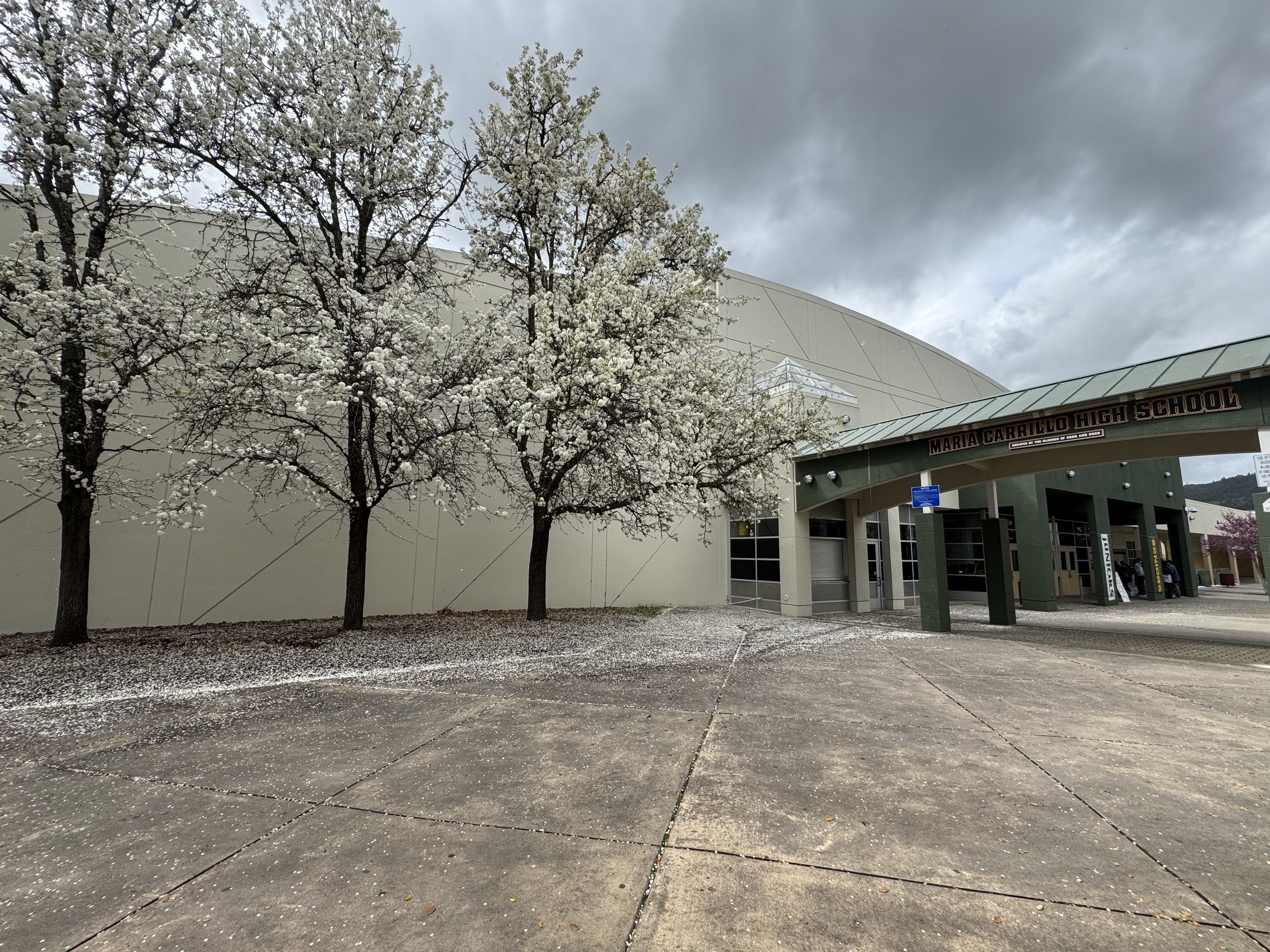How to get through the allergy season on campus
Blooming trees on Maria Carrillo campus (Chase Soylu Chee/The Puma Prensa)
By Irish O’Gorman and Chase Soylu Chee, staff writers
Beginning with the first bloom of a flower, pollen travels on bees, takes flight through the wind, and catches unsuspecting victims with a sneeze. The allergy season is back and here with a friend: a superbloom phenomenon.
With over 100 million people getting pollen-related allergies a year, allergy season is familiar. However, this season will be worse due to a super bloom.
A native botanical phenomenon that happens in California and Arizona occurs after an irregular rainy season causes a high proportion of blooming and germinating flowers, trees, and plants. While this may look beautiful, the effects devastate students who suffer from allergies at Maria Carrillo High School.
With all the pollen around campus, some students are suffering from allergic reactions. Unfortunately, students with these symptoms have a lower ability to focus and make decisions, experience fatigue and memory trouble, and risk missing school, as reported by verywellhealth.
Recently, observed on Maria Carrillo High School's campus, Callery pear trees have released tons of pollen due to the super bloom. You can see the petals and pollen all over campus and smell the odor coming from the buds.
Similarly, Eastern Redbud, lavender colored trees that are barely visible from the front of the school, are prevalent in the back of the campus. Luckily, these do not produce much pollen and could be used to build tolerance against other pollen.
These trees are reported to contribute minimally to seasonal allergies. However, due to the super bloom and the widespread of Redbuds on campus, these lavender trees may cause heightened allergies.
With strong, windy weather, pollen carried by heavy wind currents can reach up to 400 miles out, meaning pollen from Oregon, Nevada, and even some parts of Utah can float to California.
Not all pollen is from budding trees and flowers, it can also be from grass. Grass allergy season peaks during springtime, which causes many common symptoms like sneezing and runny nose. Freshman Charleigh Rightsell has had her fair share of heightened grass allergies.
“[This] affects me because my friends like to go out on walks and sit in the field and stuff during nice sunny days, and it’s really hard because I’ll get like rashy, and it just makes me really sniffly,” said Rightsell. When outside for a while, Rightsell tries to go back into closed areas like classrooms and blow her nose while trying to stay calm.
Students are not the only ones who are affected; it also affects campus staff. Diego Allende Rives, our Student Safety Advisor, has a bad case of allergy symptoms. These ailments work together to make his voice scratchy and dry.
“Whenever I have my allergy symptoms, I could be in the middle of something important, and then I just start sneezing so much, and I’m a person that can’t just sneeze once,” said Allende.
Allende found two ways of dealing with allergies: drinking local pollen and eating it while taking daily allergy pills.
By now, you would be asking how we deal with this nasal nightmare. Well, you are in luck. To avoid allergies, avoid plants that can produce allergic reactions, use air purifiers, and close windows or doors that can bring in allergens.
If you want a shortcut to make every day easier, consider using nasal sprays and medications such as antihistamines. Common antihistamines you would be able to get over the counter are Benadryl, Claritin, and Zyrtec, which anyone can buy.
This springtime, do not let the superbloom scare you, keep clear from allergens, and take medicine to ensure extra protection and safety outdoors to avoid those embarrassing allergy attacks during testing and class.

